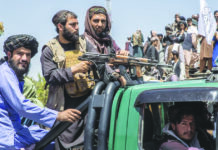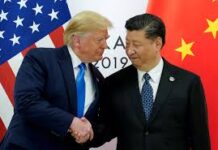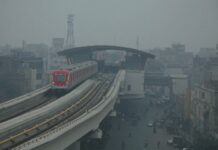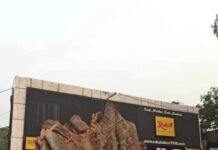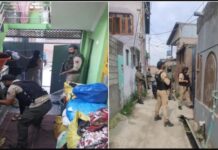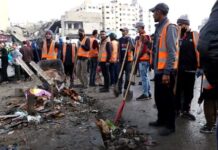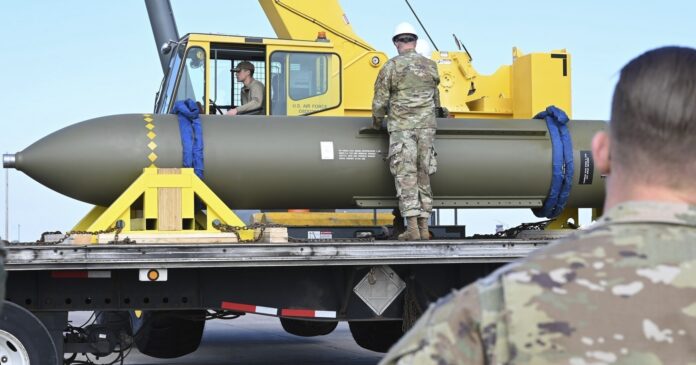As the writing on the wall became clear, alarms over impending airstrikes on Iran rang out in June with Operation Midnight Hammer. The combat debut of the Guided Bomb Units GBU-57 Massive Ordnance Penetrator (MOP) by the US Air Force on Iranian nuclear sites marked the culmination of about two decades of development. With this, a new debate in warfare has started owing to the use of non-nuclear kinetic force on nuclear sites, a critical evolution in military doctrine.
The GBU-57 MOP is a guided, penetrating weapon with the ability to reach and destroy hardened and deeply buried targets (HDBTs). It measures approximately six metres in length, weighs 30,000 pounds, and carries about 5,300 pounds of high explosive. It is guided by GPS and inertial navigation systems, and is designed to penetrate up to 61 metres of reinforced concrete or rock before detonation.
Moreover, the MOP can only be delivered by the B-2 Spirit due to its weight, with each B-2 carrying up to two MOPs. More importantly, B-2 brings stealth and precision to deep-strike missions as its stealth technology incorporates radar-absorbing materials and angular design features that minimise detection by air defence systems.
While the MOP reached operational status in 2011, the USA had not found a justification for its use until June 2025. The contested situation in the Middle East, which arguably has been the worst in decades, provided the USA with the impetus to test out its half-billion-dollar investment. In particular, the narrative that Iran was close to building nuclear weapons, offered a rationale for using this technology to target nuclear facilities. However, the presence of radioactive material therein raises environmental and humanitarian concerns.
Additionally, the political decision-making environment under the Trump Administration facilitated unilateral military actions of this nature. Notably, Congress was not consulted before these strikes, bypassing legislative oversight. Thus, this lack of institutional checks explains the use of a powerful and politically sensitive weapon at this particular juncture.
The MOP’s first combat mission may become a technological next step in terms of non-nuclear strikes on critical infrastructures, leading to escalated efforts by other states to acquire or develop it. While the weapon showcased limited battlefield performance, it still possesses the power to sway countries towards an arms race. At the same time, attacks on nuclear installations may set dangerous precedents for future conflicts. Therefore, all this must be navigated with consideration of both strategic goals and the long-term impact on global security.
During Operation Midnight Hammer, the USAF delivered 14 MOPs, 12 on Fordow and 2 on Natanz, resulting in six craters at Fordow and one at Natanz according to recent sources. The Fordow facility lies 80-90 metres underground; however, the craters created by the MOPs were not deeper than 6 metres, thus falling significantly short of reaching the facility’s subterranean chambers. Therefore, despite the bomb’s 3000 pounds of explosive and theoretical about 61 metres capability, it could not reach a facility about 80 to 90 metres deep. This exposes a discrepancy between the bomb’s advertised capability and its limited battlefield performance, a technical shortfall against Iran’s deeply buried nuclear infrastructure.
However, despite not having fully succeeded in its mission in Iran, technologies like MOP must be given due importance, keeping in mind the increasing reinforcement of underground infrastructure by various states. For instance, countries have not only hardened and subterranean nuclear facilities, but also military facilities, including airbases, naval installations, and underground structures to shield their critical military assets. Technologies like the MOP demonstrate that conventional forces can now incapacitate targets previously deemed impervious to attack, prompting states to reassess both their covert infrastructure and the option for employing such advanced non-nuclear munitions.
Following the MOP usage in Iran, other states may be incentivised to consider conventional hard-target kill capabilities as a countermeasure. For instance, India is reportedly pursuing a high-powered conventional bunker-buster missile. Similarly, if other countries start pursuing these weapons, there could be a new arms race impacting the already fragile regional and global stability.
Besides, international law also comes into play when strikes on nuclear facilities are being discussed, as these sites are under protection as per Article 56 of Protocol I to the Geneva Conventions. It states that such installations… shall not be made the object of attack, owing to the catastrophic consequences of radiological release. However, states’ use of conventional munitions to target nuclear sites risks normalising the military viability of such strikes. This weakens longstanding legal and normative restraints and also contributes to establishing norms of framing such actions as legitimate use of self-defence or counter-proliferation.
The MOP’s first combat mission may become a technological next step in terms of non-nuclear strikes on critical infrastructures, leading to escalated efforts by other states to acquire or develop it. While the weapon showcased limited battlefield performance, it still possesses the power to sway countries towards an arms race. At the same time, attacks on nuclear installations may set dangerous precedents for future conflicts. Therefore, all this must be navigated with consideration of both strategic goals and the long-term impact on global security.


